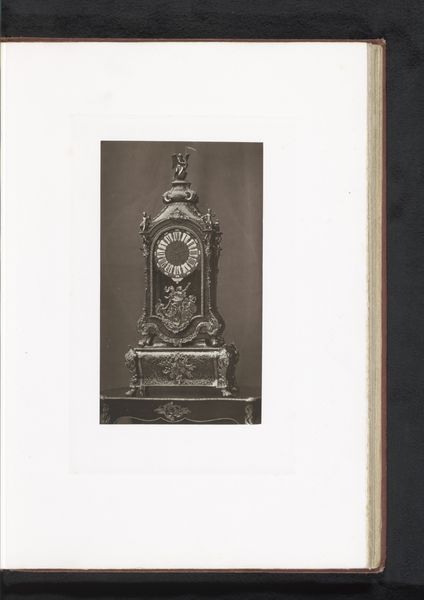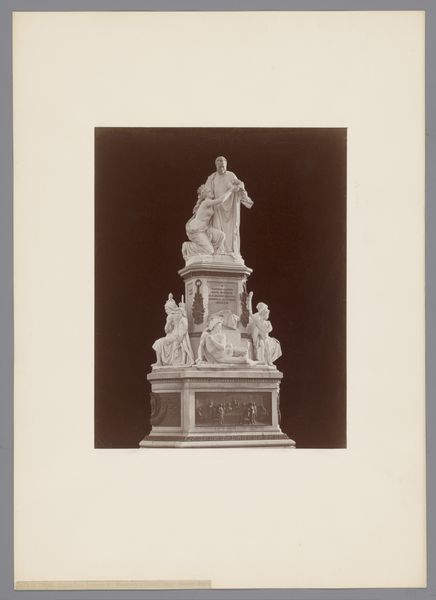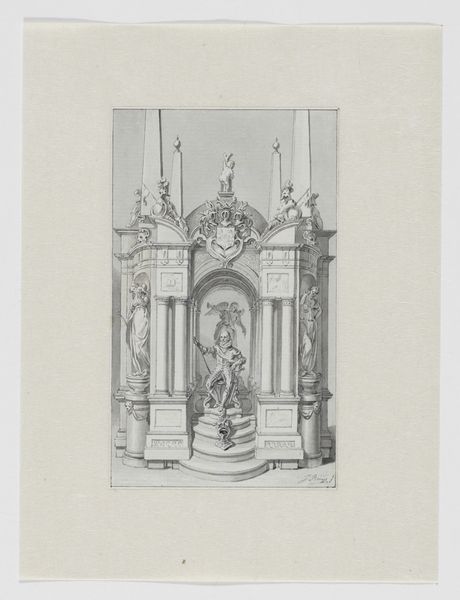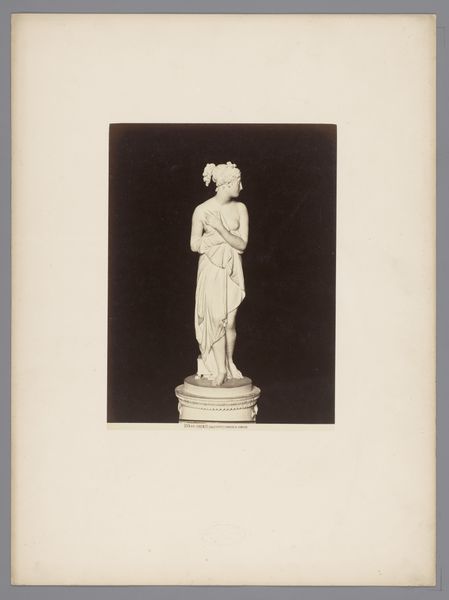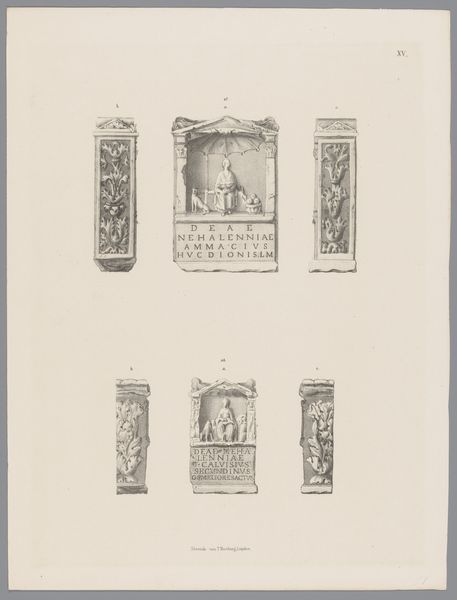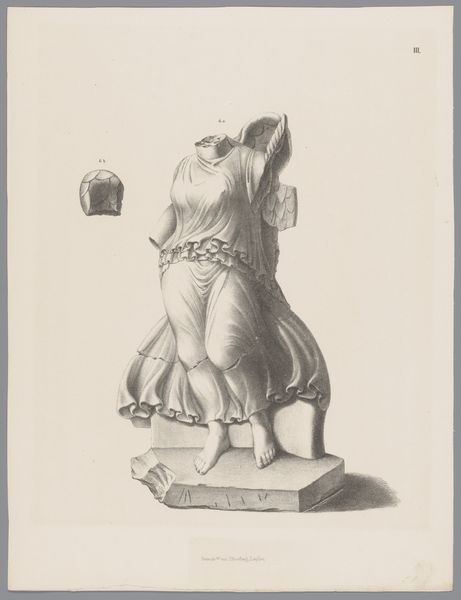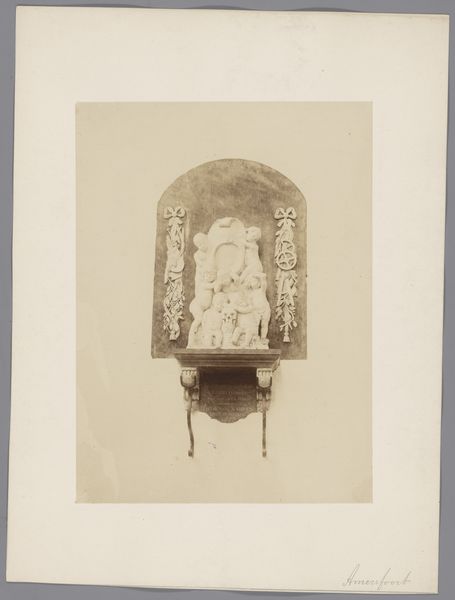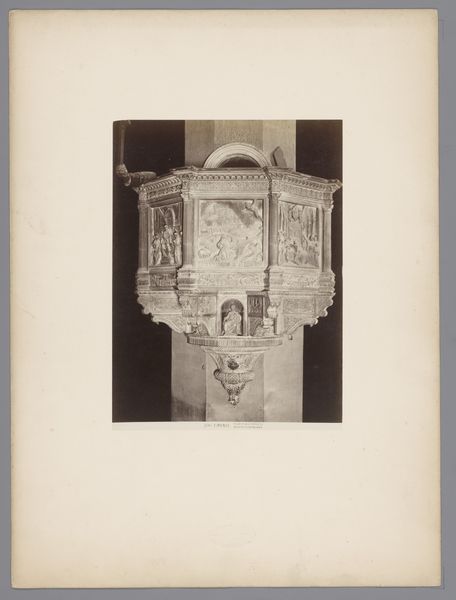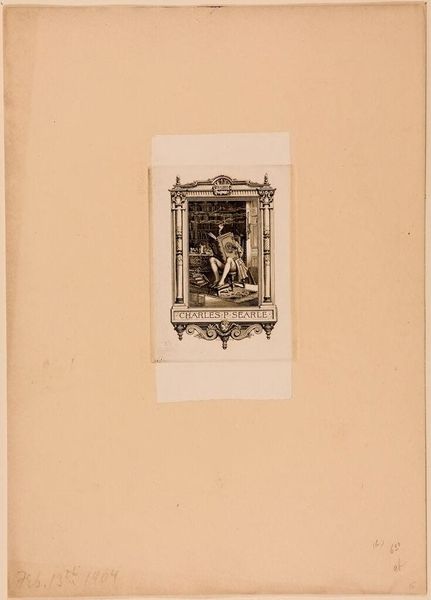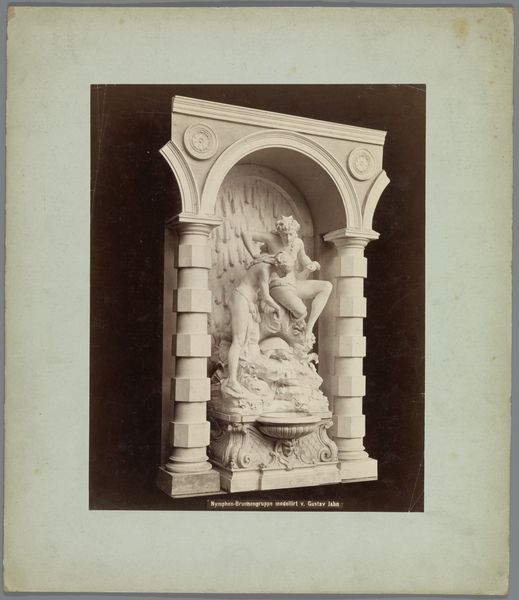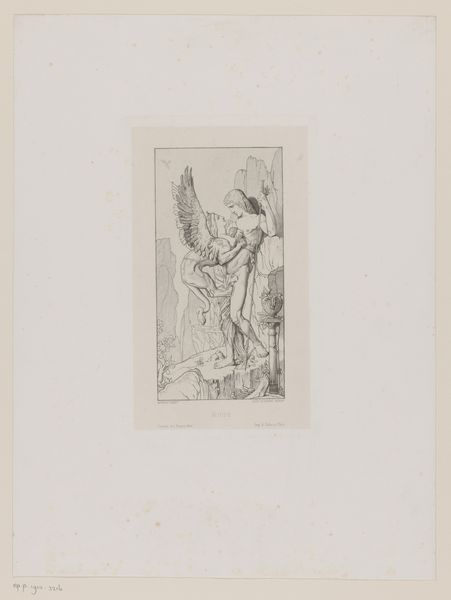
Funerary Monument of Prince William of Orange Nassau, from Oeuvre de Canova 1817
0:00
0:00
drawing, print, paper, ink, engraving
#
drawing
#
neoclassicism
# print
#
landscape
#
paper
#
ink
#
history-painting
#
engraving
Dimensions: 442 x 270 mm (plate); 860 x 620 mm (sheet)
Copyright: Public Domain
Editor: So this is an engraving from 1817, "Funerary Monument of Prince William of Orange Nassau, from Oeuvre de Canova," made with ink on paper. It depicts a woman draped in fabric, resting her head on her hand looking despondent with what seems to be a swan or stork looking up at her. There's an almost melancholic stillness to the piece, something very solemn. What's your take on it? Curator: It’s a fascinating piece to consider in terms of how public monuments operate. This engraving reproduces a design for a funerary monument – a very public statement of grief and remembrance. Think about it: How do these sculptures, often commissioned by powerful families or institutions, shape our understanding of historical figures? How does it solidify specific political narratives through visual imagery and placement within the social landscape? Editor: So the very act of commissioning shapes how we view this person later on. Can you tell me more about the use of Neoclassical elements, and the function they served at this time? Curator: Absolutely. Neoclassicism, with its emphasis on reason, order, and virtue, became the dominant artistic language during this period. The simplified forms, the idealized figure, the focus on moralizing subjects - these all contributed to an image of stability and legitimacy, particularly attractive to those in power. The scene itself feels very controlled. Editor: So, would you say the success of a piece like this depended heavily on public sentiment aligning with this representation? What if there was discordance between the artwork and its viewers? Curator: Precisely. Monuments are never neutral. If public sentiment shifted and the virtues embodied in the monument no longer resonated, or worse, were actively opposed, the monument’s very existence could become a point of contention. Thinking about how that piece communicates messages that were relevant at that time gives me something to think about! Editor: It's fascinating to think about a static artwork possessing so much active social weight. Thanks so much for clarifying.
Comments
No comments
Be the first to comment and join the conversation on the ultimate creative platform.
